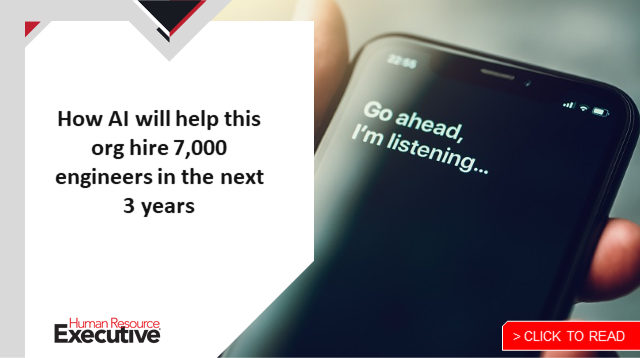Many employers in the retail and food industries have felt the impacts of the Great Resignation more than most and have been looking for solutions to help fill the talent pool while maintaining brand and company culture.
That’s led many to increasingly adopt AI and automation. Is that shift as scary as some believe? Fast food giant McDonald’s doesn’t think so.
“Are we taking human experience out with automation?” said Alexa Morse, director of HR operations and execution at McDonald’s, noting that, despite her initial fears about incorporating more automation into HR processes, the pivot has paid off.
Speaking Wednesday at the HR Technology Conference and Exposition, she said the company has seen great success since partnering with Paradox in 2019 and rolling out McHire, the burger chain’s AI-enabled hiring platform.
“It helps us hire faster, but what we’re getting out of that is offering a more personalized experience and engaging candidates between steps, especially now when the employee experience is at its most critical,” she said.
See also: Why HR is at the heart of McDonald’s new golden age
Designing the McHire solution required a collaboration not only with Paradox but also with many of the franchisees, whom she said were the “people experts.” All the stakeholders came together to deliver something that both worked for corporate-owned restaurants and also gave franchisees the capability to customize the platform to their needs.
There was extensive testing and piloting, Morse said, “so we could really learn and tweak along the way, so when we did deliver for the full launch, we were delivering an MVP that was very elevated and excited a lot of people going into the next year.”
 And the rollout of the tool enabled McHire to strengthen its reputation when it came to hiring. For instance, the pandemic brought so many unknowns and the immediate need to build a fully contactless hiring process.
And the rollout of the tool enabled McHire to strengthen its reputation when it came to hiring. For instance, the pandemic brought so many unknowns and the immediate need to build a fully contactless hiring process.
“Video interviews were fully set up in the tool, and it was homegrown, which made it easier to use and enhanced the candidate experience,” she added.
Just a few years ago, most employees weren’t hired at a McDonald’s without filling out a paper in store and then coming back for an interview, she noted. “Now, they’re getting hired within hours.”
In fact, some of the successes reported include:
- A shortened application and scheduling time from three days to three minutes.
- A doubling of applications, with a 99+% candidate satisfaction rate.
- A 60% reduction in time-to-hire in a little more than a year.
- Returned four to five hours of non-administrative work to restaurant managers per week.
And for employers looking to implement similar programs into their talent acquisition process, Morse shares some long-term considerations to keep in mind.
Change management: “We cannot emphasize this enough,” she said. “This has continued to be the core of how we enhance McHire and what the future looks like.” Think about the entire organization and next steps for the platform, she said.
User experience: While the candidate experience is important, the human experience is really important, for all sides, she said—from tech administrators to store managers and job candidates. This labor market isn’t getting any easier, especially in the hourly space, Morse said. “How to differentiate [your company] in that market will come down to how a candidate feels and making yourself the place they want to work.”
Candidate data: “The people analytics we’re getting now is so much better than four to five years ago,” she said. The data has allowed McDonald’s to quickly draw more actionable insights to better optimize the platform.
Continued education: “In an hourly space, we can’t forget there are new users all the time,” she said, and they all need to be trained on how to use new technologies.

